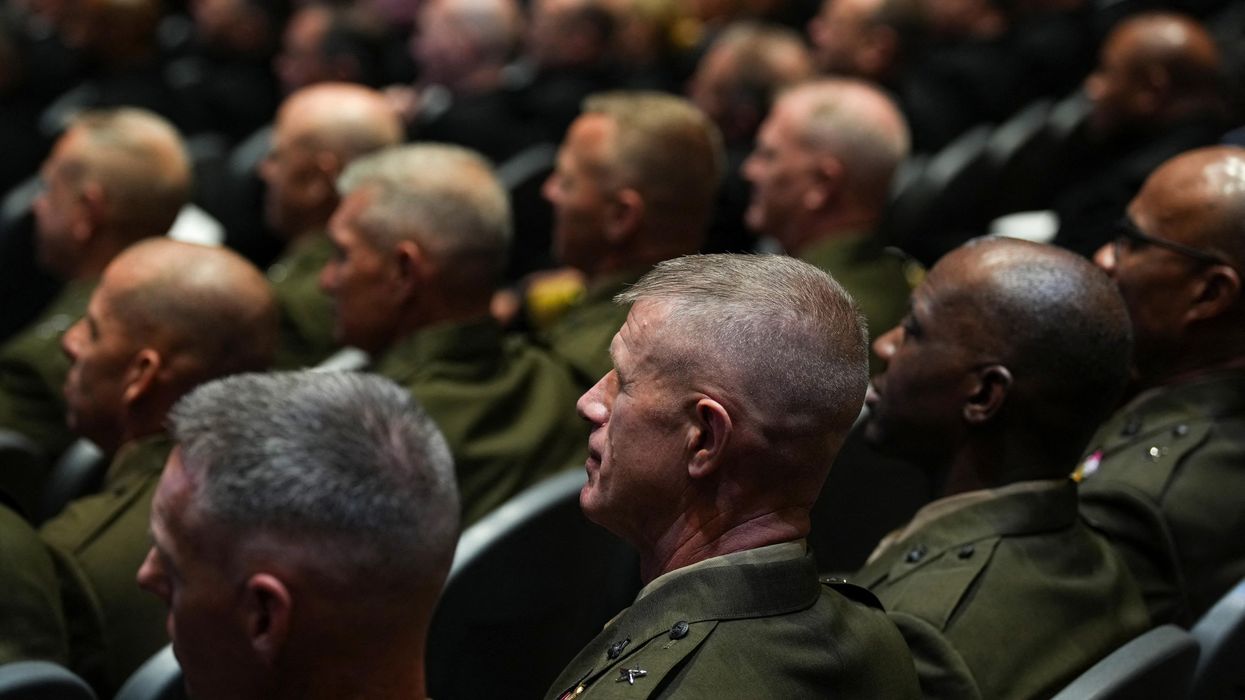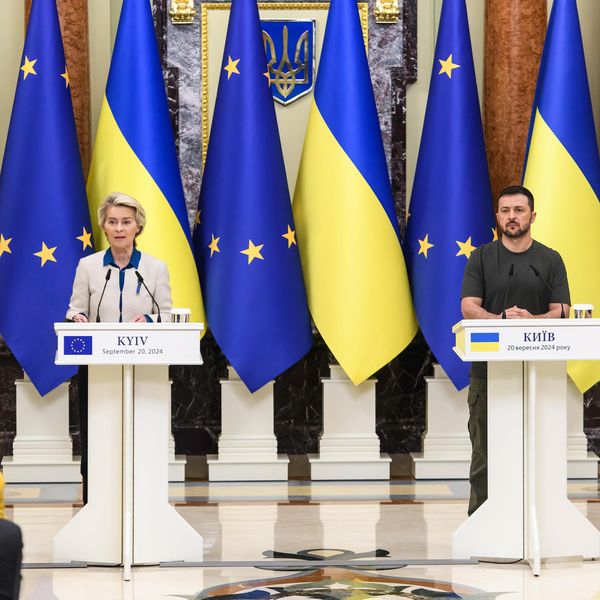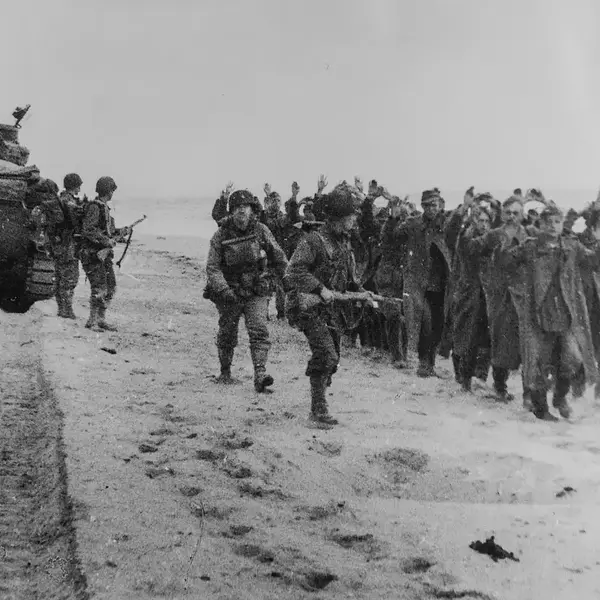This week, a number of insiders confirmed to Politico the Trump administration’s interest in surging the number of deployed American nuclear weapons if it does not renew New START next February.
According to the officials, the White House requested the Pentagon to report on how quickly it would be able to take nuclear warheads from the inactive stockpile and redeploy them into active service with its missiles and bombers, thereby exceeding the warhead limit (1,550) currently imposed under the treaty.
New START, which has a built-in option for both countries to extend the treaty for six years, has proven to be a stabilizing foundation for both Washington and Moscow, despite recent nuclear tensions. Under its terms, both countries’ strategic forces have been reliably stable over the last decade, and thanks to robust inspection mechanisms and procedures, transparency has been at an all-time high for both sides.
Vladimir Putin has long been on the record as willing to sign New START’s extension without negotiation, a veritable “layup” for a Trump administration in need of a foreign policy success. But the White House has sent decidedly mixed signals about what it expects before signing the renewal, and its reported interest in enacting a surge next year seems to confirm that it is now looking beyond the treaty entirely. Ostensibly meant to add pressure on Russia to negotiate, this week’s news is seen as extremely unlikely to move the needle for Moscow.
As perplexing as the White House’s approach to the treaty has been, it is still important to consider how a nuclear surge in 2021 might affect American capabilities and the strategic balance. Unfortunately, it quickly becomes clear that the proposed “up-loading” of the existing nuclear force will not make a meaningful difference in achieving any of Washington’s stated objectives. Worse, such a move would surely come at a high cost to bilateral trust, international reputation, and cause further damage to an already-crippled global nonproliferation regime.
Lessons lost
Today’s American strategic nuclear force consists of approximately 400 silo-based missiles located across the upper plains, 200 submarine-launched missiles held on 14 boats, and roughly 80 heavy bombers capable of carrying cruise missiles or gravity bombs. Together, these three platforms are referred to as the nuclear triad.
In broad terms, the strategy for such a force structure has been the same since the 1960s: a diversity of vehicles and a sufficient stockpile means the U.S. could not only choose various means of executing a nuclear war, but also that it could endure a surprise attack with enough forces left over to meaningfully strike back.
But the U.S.-Soviet experiences during the Cold War should teach us that effective and safe deterrence strategy means having a balanced approach: one should field enough weapons and abilities to render any potential enemy attack pyrrhic, but should also avoid advancing such forces in a way that could add pressure on an adversary to take risks.
Absent a clear new strategy, a sudden weapons surge after decades of reduction would do nothing to enhance the security of any leg of the triad, and instead would inflame tensions among our allies and adversaries, leading to potentially riskier outcomes in all future conflicts.
The same triad at any size
For America’s land-based ICBMs, a post-New START surge could mean either adding additional warheads to existing missiles or bringing some of the roughly 50 mothballed Minuteman missiles out and installing them into existing silos. Neither change would advance any new or existing strategic goals, though equipping each missile with additional warheads has historically been an inflammatory move. Similarly, bringing the ICBM fields from 400 to 450 total missiles would not suddenly overwhelm Russian targeting capability; the silos would still effectively serve as the same “missile sponge” that most strategists consider them to be.
For the submarine-based nuclear force, such an increase would similarly mean either a denser packing of warheads on each Trident missile, or the re-enabling of some of the now-disabled missile tubes on each Ohio-class submarine. Both are feasible short-term solutions given some engineering, but each of the 14 boats already carries upwards of a staggering 90 strategic warheads aboard — more than enough for a massive strike against any imagined adversary. Even as much as doubling that number could not possibly result in a fundamentally different capacity with regard to neither offense nor defense.
Bombers, meanwhile, are unique in that they are theoretically “reusable” means of delivering nuclear weapons and can be used in more flexible scenarios than ballistic missiles. As such, there are already many times more missiles and bombs than there are bombers. Activating and preparing additional cruise missiles for the B-52s or bombs for the B-2s would not just be impractical in any imagined scenario of nuclear conflict — it would be exorbitant. Furthermore, without any ability to add additional bombers to the fleet, such a deep warhead stockpile would contend with a serious delivery bottleneck, rendering any numerical gains moot.
Of course, these assessments make no room for considerations of future modernization plans, a potential wildcard in any arms control conversation. The Trump administration has consistently favored expensive nuclear modernization projects from the outset, so it’s feasible that walking away from New START could be seen as a way to make quantitative room for planned future forces to come online.
Indeed, replacement programs for each leg of the triad are already in various stages of development, but such upgrades are many years away, and would not explain the interest in a rapid surge of deployed warheads so soon. Even if, for example, the new stealth bomber was due to make its debut in 2021, it would be some time before they could make a meaningful addition to the air-launched nuclear force. Further, additional deployments anywhere in the force could risk already-tight supply lines for existing warhead modernization projects and missile testing schedules.
Irresponsible policy
Beyond any shortsided perceptions of “hard-nosed” negotiation tactics on New START, a surge to a force of 3,000 strategic warheads in any configuration would offer U.S. nuclear strategy nothing it doesn’t already have. Even with a maximalist read on the value of nuclear weapons, it’s clear that new land-based missiles would primarily serve as additional targets, the submarine force is already at its most effective, and there aren’t enough bombers to carry additional bombs.
On the contrary, much of the same goals outlined by successive administrations could likely be achieved by a much smaller force, further underlining the relative “bargain” of the existing New START restrictions, and opening up fresher conversations on how a “new look” nuclear force could maintain its existing deterrence missions while reducing costs.
The decision to reverse almost five decades of nuclear reductions across nine administrations should be accompanied by an extremely clear rationale and a realistic, achievable set of objectives. In even investigating the possibility of a post-treaty surge, the Trump administration is already incurring costs which will set back future arms control work and endanger us all.
















